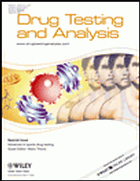
“Hemp (Cannabis sativa L.), traditionally cultivated for industrial use and harvested for fibers and seeds, has raised much interest as a sustainable crop in the last years.
Recently, hemp seeds and derived oil have started to be used in a variety of food products. Hemp-based food products are considered less allergenic than those from other edible seeds, although this statement has never been experimentally verified.
In this study high purity grade hemp flour (HF) and hemp protein isolate (HPI) were obtained through a fast and cheap process starting from defatted hemp cakes, a residue of hempseed oil extraction.
HPI resulted enriched at nearly 86% protein, mainly constituted by the storage protein edestin (accounting for 70% total protein). In vitro protein digestibility was determined using a static model of gastrointestinal digestion (GID), which included a final step with purified brush border membrane (BBM) enzyme preparations. HF and HPI showed a high degree of digestibility. The survival of potential bioactive and/or allergenic peptide sequences in digests was investigated by peptidomic analysis. Only a limited number of sequences survived GID. Among them, fragments from 12 seed proteins. These fragments were precursors of sequences with potential bioactive peptides, which might justify the bioactivity of HPI hydrolysates, reported in previous studies.
More importantly, all known hemp allergens, including the major thaumatin-like protein and LTP, were entirely eliminated by the HPI production process, neither fragments of the proteins were present after GID.
These data support the use of HPI as an ingredient for hypoallergenic foods.”
https://www.ncbi.nlm.nih.gov/pubmed/30599980
https://www.sciencedirect.com/science/article/pii/S0963996918307427?via%3Dihub


